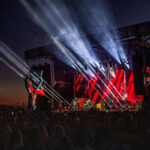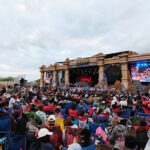
World’s Largest Music Festival Upgrades with More LED Video
Picture in your head the largest music festival in the world. Scores of eager concert goers, beer in hand, flowing through a sea of humanity, traveling stage-to-stage to see their favorite artists and fall in love with some they’ve never heard before. That sea of humanity shares a shoreline with a majestic body of water, adjacent to a bustling metropolis. If you’re wondering where this musical wonderland is located, you might be surprised to find it in downtown Milwaukee at Summerfest, the world’s largest music festival.
Summerfest got its start in 1968 and moved to its current location at The Henry Maier Festival Park in 1970. The 75-acre plot of land is nestled between Milwaukee’s trendy Third Ward neighborhood and the scenic shore of Lake Michigan. The lake provides a stunning backdrop for a festival unlike any other. Over the course of 11 days, more than 800,000 people descend upon the festival grounds to take in the sounds of more than 800 bands playing on 12 stages. The largest stage — the American Family Insurance Amphitheater — is a 23,000-seat colossus built into a hillside. “The Amp,” as it’s known, routinely plays host to some of the most iconic names in music and has done so since its grand opening in 1987. The Rolling Stones, McCartney and Tom Petty have all headlined in recent years. Always an eclectic line-up, this year’s Amphitheater headliners included Zac Brown Band, The Killers, Lil Wayne with Snoop Dogg, Lionel Richie, rising superstar Billie Eilish and Wisconsin native and Bon Iver frontman Justin Vernon.

A Friendly Neighbor
Turning our attention to a popular Milwaukee area company, Blizzard (formerly known as Blizzard Lighting) opened its doors in 2010, in founder Will Komassa’s suburban basement. Nearly a decade later, Blizzard now occupies 40,000-square feet of office, technical and warehouse space just 20 miles west of Summerfest in Waukesha, WI. Komassa attributes Blizzard’s rapid ascension in the industry to unorthodox marketing and promoting innovative, high-quality products designed to fill gaps in the marketplace. “We’re always looking to be unique. It’s fun to make people say, ‘Wowee zowee, that’s cool.’ When that’s not possible and you’re working with core fixtures found on every rig, we stand out with quality, both in our products and our people.”
Blizzard’s product mix has evolved since its inception, moving beyond being a “DJ company” to serving high-end production and integration markets. Part of that evolution included adding their IRiS LED video panels back in 2017. It’s a move that put Blizzard on a path to partnership with their neighbors to the East.
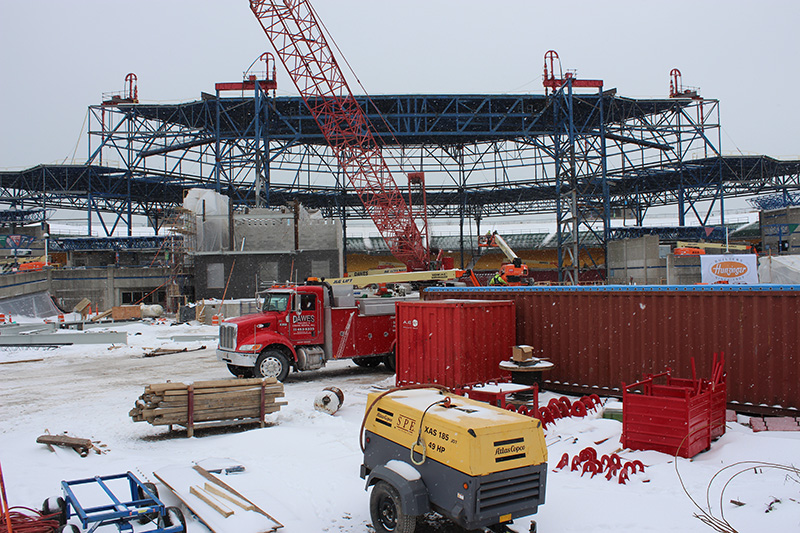
A Literal Face-Lift
After more than 30 years and hundreds of concerts, the American Family Insurance Amphitheater was showing its age and was starting to miss opportunities to bring some of the largest shows to The World’s Largest Music Festival. So, in October 2018, Summerfest’s parent organization, Milwaukee World Festival Inc., a 501(c)(3) charitable organization, announced a massive renovation. More than $50 million would be invested into the facility to help the venue continue to attract top talent and remain a driver of economic impact and tourism for Milwaukee.
The construction kicked off earlier this year and will take place in two phases over two years. The first step of the facelift was a roof-lift. Ever-growing stage productions made it increasingly difficult for the Amphitheater and its 39-foot-tall roof to accommodate the large spectacles of top touring artists. In a feat of modern engineering, a half-acre, 607,000-pound portion of the roof was raised to 65 feet. The process took eight lifting motors, known as strand jacks, pulling cables inch by inch simultaneously, until the 26-foot lift was completed. Jennifer Lopez’s headlining show at this year’s Fest featured an extravaganza that wouldn’t have been possible before the lift.
Much of the rest of phase one construction focused on back-of-house upgrades to improve the experience for artists and crew. New state-of-the-art dressing rooms, backstage production spaces, upgraded catering and dining facilities and expanded loading dock space for semi and tour bus parking all debuted in time for the 2019 festival.
Meanwhile, most of the public-facing upgrades were originally slated for a 2020 debut. Concourses designed to create shorter beer lines — vitally important in Wisconsin — plus new food and beverage offerings, more restrooms, improved seating in the lower bowl and new, private VIP areas, are all part of phase two construction. Six new high-definition video screens were also part of the 2020 construction plan, with four 16-foot walls lining the back of the Amphitheater and two 28-foot walls on either side of the stage. That timeline shifted significantly thanks to a new relationship with their neighbors to the West.
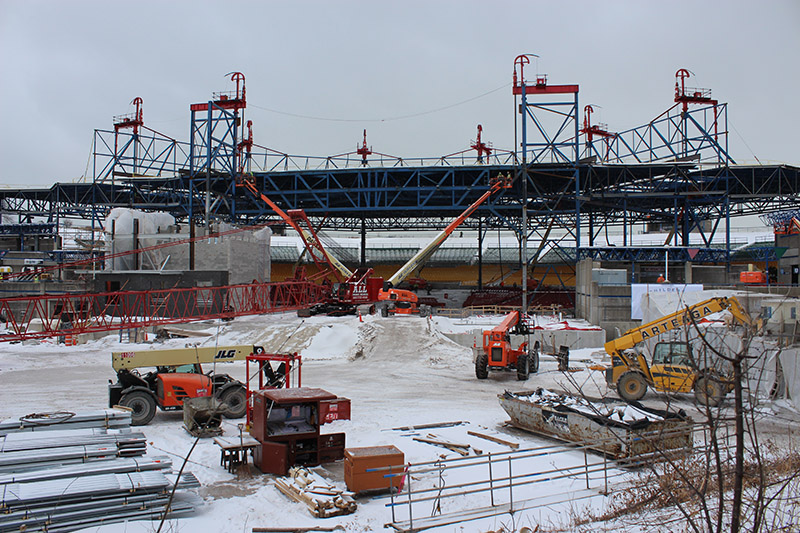
A Foot in the Door
For Komassa, a Milwaukee-area native, Summerfest has always been one of Blizzard’s “White Whales.” “I first set foot on the festival grounds when I was around 10 years old — my Dad rockin’ out to Peter Frampton and me slurping a Sno-Kone. Turns out, those are two of my favorite things about summer.” It’s fitting that a nearly 10-year-old Blizzard would make its debut there around the same age. “Of course, you always want to be at the biggest show in your hometown. When that show also happens to be the biggest in the world, and when it’s been a part of your formative years, it’s even more special.”
The Amphitheater renovation project was announced after the teams from Blizzard and Summerfest first met. Will is thankful for the fortunate timing. “We were working with them on a potential partnership for months before there was ever any conversation about video walls. As we gained some mutual admiration and trust, the Amp redesign project started to get bantered about, and we found ourselves in the right place at the right time, with the right products to do the job.”
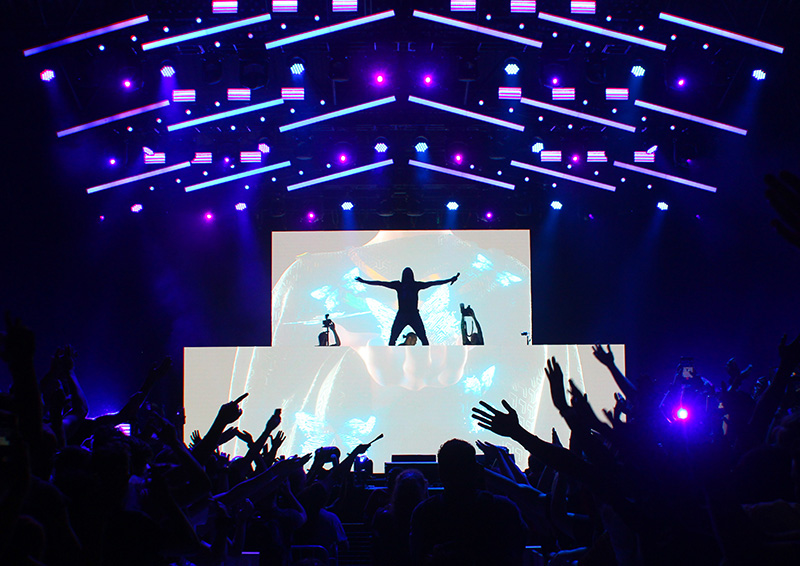
Passing the Test
With its non-profit status and deep-seeded roots within Milwaukee and the entire state of Wisconsin, Summerfest has always prided itself on local partnerships. Still, when orchestrating a more than $50-million-dollar renovation project requiring world-class technology, proximity isn’t the top consideration. While Milwaukee’s summer weather is usually ideal for festival season, year-round conditions in Wisconsin are temperamental, to put it mildly. The temperature can drop to a negative 60° wind chill (it did in January 2019) then swing to a suffocating heat over 110° with 100% humidity (it did six months later in July). Top-of-the-line, IP-rated video panels are a necessity. Blizzard stepped up with its IRiS IP3, an outdoor-rated, ETL-listed 3.9mm LED video panel.
Even when the weather is temperate, the sun presents another major challenge. Summerfest runs during the last week of June and first week of July, when the days are at their longest. Every headlining act at the Amphitheater starts well before sundown, which previously rendered the Amp’s incumbent projectors useless for almost half of a typical show. Improved brightness was a must for their replacements. Fortunately, Blizzard’s IRiS IP3 panels boast a 4500-nit calibrated brightness. It didn’t go unnoticed during the demo. “Everyone was astonished how bright the screen looked. I think we had it at 15%. We offered to set them to ‘irradiate’ (100%), but their tech team was keen on keeping their eyesight intact,” joked Komassa.
“I looked around and everyone was sort of shocked at the quality, the color contrast, the viewing angle. Atom (Slaby, Blizzard’s COO) and I just smiled like two kids with the coolest new bikes in town. We’ve always known how impressive they are, so it was nice to get that response from a group of battle-tested techs.” Blizzard has the ability to react quickly should problems arise, a service Will says they can provide to any customer around the country. “At any given time, we have around 5,000 panels in stock. We do quality control tests on them in our warehouse right before they go out, so problems are rare. But if they do happen, we can have a new panel or module sent overnight… or for Summerfest we can drive one down in about 20 minutes, or 15 minutes if we take my wife’s car.”
With a demo complete and confidence both in Blizzard and its panels solidified, Summerfest finalized a sponsorship agreement to utilize nearly 900 IRiS IP3 panels in total — almost 2,500 square feet — of video wall for the 2019 festival.

Renovation and Revitalization
Milwaukee is often stereotyped as a rust-belt city known mostly for its beer and cheese. Owing to its strong German heritage, there’s still plenty of beer and cheese throughout the Summerfest grounds, but Milwaukee is also in the midst of a prolonged period of renewal and revitalization. Over the last 15 years, investments in the arts and entertainment have paid off, with steady growth throughout Milwaukee’s various diverse neighborhoods in and around downtown.
Investments in renovating and revitalizing the Summerfest grounds moved step for step with the city it serves. Summerfest grew their partnerships with iconic Milwaukee brands to renovate stages like the Miller Lite Oasis, the Harley-Davidson Roadhouse and the Briggs & Stratton Big Backyard. In total, 12 permanent music stages dot the expansive festival grounds. All of them have received upgrades in the last few years. The most recent was a complete reconstruction of the Uline Warehouse Stage on the north end of the festival grounds. The project reimagined the stage and seating area to accommodate larger crowds. It also expanded production capabilities, including lighting and audio, while adding a permanent install 60-panel, 16-foot-wide IRiS IP3 video wall.
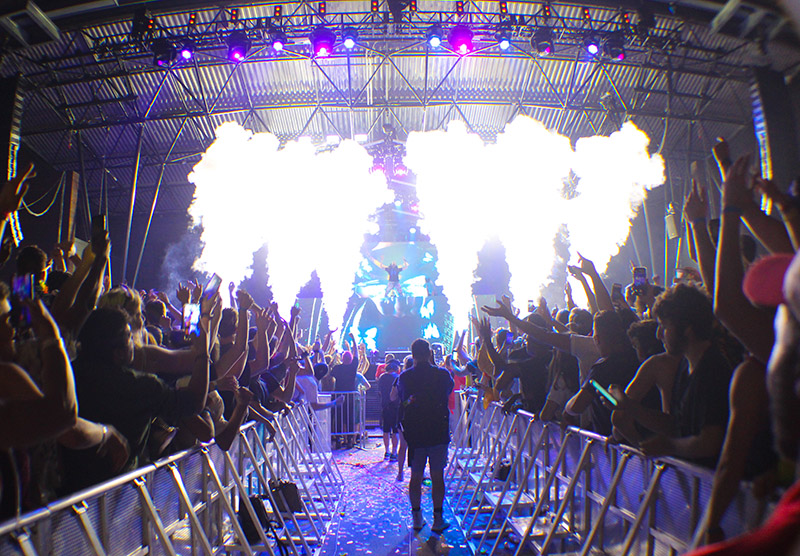
A People’s Festival
Summerfest’s affordability and accessibility make it truly unique among festivals. General admission tickets grant visitors access to most of the festival’s stages. The Amphitheater is the only stage requiring an additional paid ticket, but that ticket includes general admission access as well. The single-day general admission ticket costs a mere $23. Plus, the notably frugal locals can tell you a myriad of ways to get free or discounted admission, including daily promotions run by Summerfest and its sponsors. Affordable multi-day passes are also available.
Diversity in genre and artists is another hallmark of Summerfest’s lineup. Pop, classic rock, country, indie, hip hop, R&B, funk, EDM… a plethora of musical styles ring out every night of the festival. The nine ground stages saw nearly 200 headlines acts over the 11 days. Jason Mraz, Chvrches, Styx, Lizzo, T-Pain, The Head and the Heart, Chase Rice, The National, The Roots, The Allman Betts Band, Big Gigantic, Third Eye Blind, T.I and Brandi Carlile were among them, just to name a few. On the festival’s opening night alone, if you timed it properly you could have strolled the grounds and seen Thomas Rhett, Walk the Moon, Hanson, Steve Aoki, Judah & the Lion, Quinn XCII and Foreigner all within about an hour, not to mention the “Big Bang” fireworks show that annually kicks off the festival.
Will Komassa and a large crew of Blizzard employees spent opening night at yet another stage featuring their screens, as the large pavilion on the south end of the grounds where two more 60-panel IRiS video walls were in use. Foreigner took the stage and played to a full crowd. Komassa, a self-described “Cold-As-Ice Jukebox Hero” was keen to share the experience with his team, “Yes, at my core, I’m a sentimental sap, but I truly believe what we have at Blizzard is special. This partnership with Summerfest came from a lot of hard work by a lot of people. It’s true and it’s a great feeling — if you love what you do, you’ll never work a day in your life. That’s even more the case when you get to do what you love each day, surrounded by good friends.”

Taking Center Stage
While Will and the Blizzard staff were taking in Foreigner, more of their panels were a few stages down at the Miller Lite Oasis. While the majority of the IRiS panels in Blizzard’s sponsorship were used for permanent install I-Mag purposes, an additional 220 were designated for showcase performances around the festival. The design for Steve Aoki’s set called for ground stacked panels as a façade for his gear and a large video wall behind him. In total, Blizzard panels were used for five headliners, including one of the most talked about shows, a performance by comedy rappers The Lonely Island at the Miller Lite Oasis. T-Pain, who was headlining the Harley-Davidson Roadhouse next door, joined the trio to perform “I’m On A Boat” as the encore. It’s the sort of exposure Komassa was looking for, “That’s what we want. We can talk all day about how impressive our panels are, but getting them in the hands of the touring crew so they can see them for themselves, it’s invaluable. We got some incredibly positive feedback. Plus — we were on a [expletive deleted] boat!”
Looking to the Future
The fully renovated American Family Insurance Amphitheater will be unveiled in the spring of 2020. Summerfest’s partnership with Blizzard is a multi-year deal and looks to keep growing. “We are thrilled Blizzard has joined our family of Summerfest sponsors and look forward to hosting new video installations to amp up the concert experience for fans,” said Sarah Smith Pancheri, VP of Sales & Marketing, Milwaukee World Festival, Inc.
Blizzard’s IRiS IP3 LED video panels feature a 3.9mm pixel pitch, a refresh rate of 3840Hz and 4500-nit brightness. The panel dimensions are 500mm x 500mm, made of CNC + cast aluminum and are capable of 10° concave and 5° convex curvatures. They come equipped with NovaStar Enhanced (Armor Series) receiving cards. Blizzard’s LED video line also includes the IRiS R2 and R3G2, 2.9mm and 3.9mm indoor production panels, respectively. Blizzard also offers IRiS InSite 2.5 and 3.8 for permanent installations. All Blizzard IRiS panels are cETLus listed and FCC certified.
Blizzard is also an authorized US distributor for all NovaStar products and used them throughout their work at Summerfest. The Amphitheater project utilized fiber connected NovaStar MCTRL4K and MCTRL660 Pro processors. NovaPro HD and NovaStar VX6S processors were in place for the display screens at the Uline Warehouse stage and the south pavilion. The production panels at the Harley-Davidson Roadhouse and Miller Lite Oasis ran on NovaStar VX4S processors.
For more information on Blizzard, visit www.blizzardpro.com

